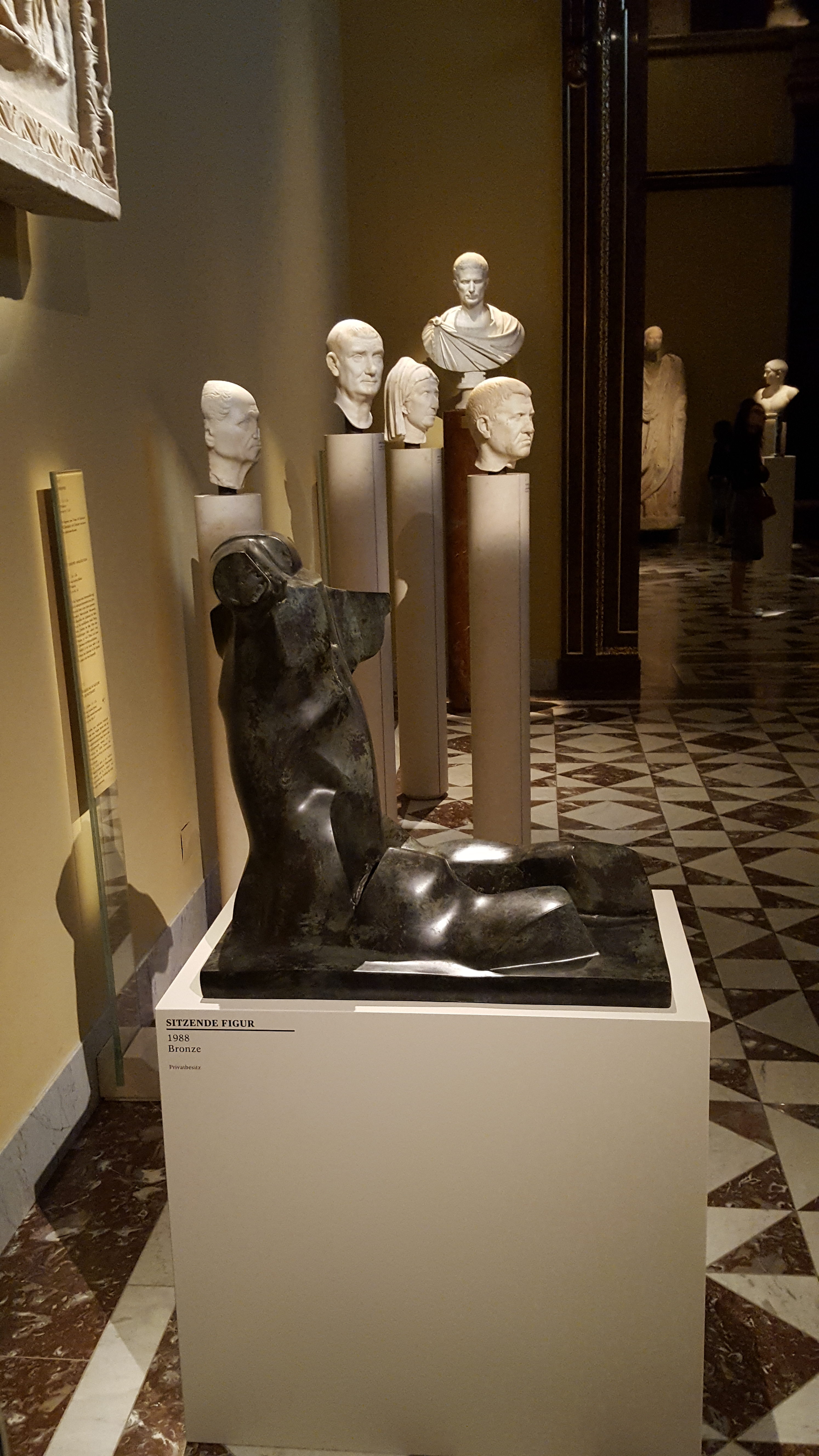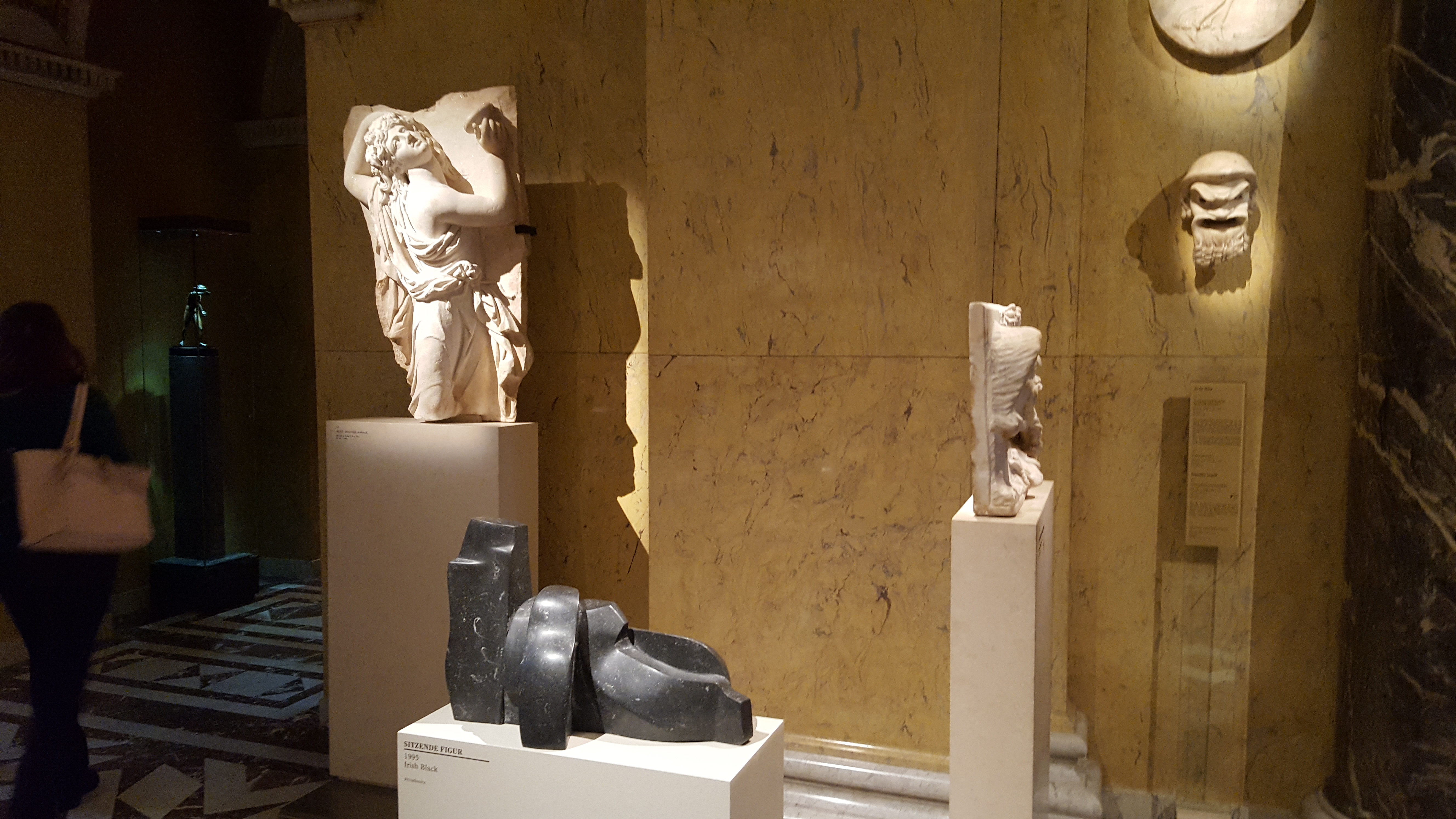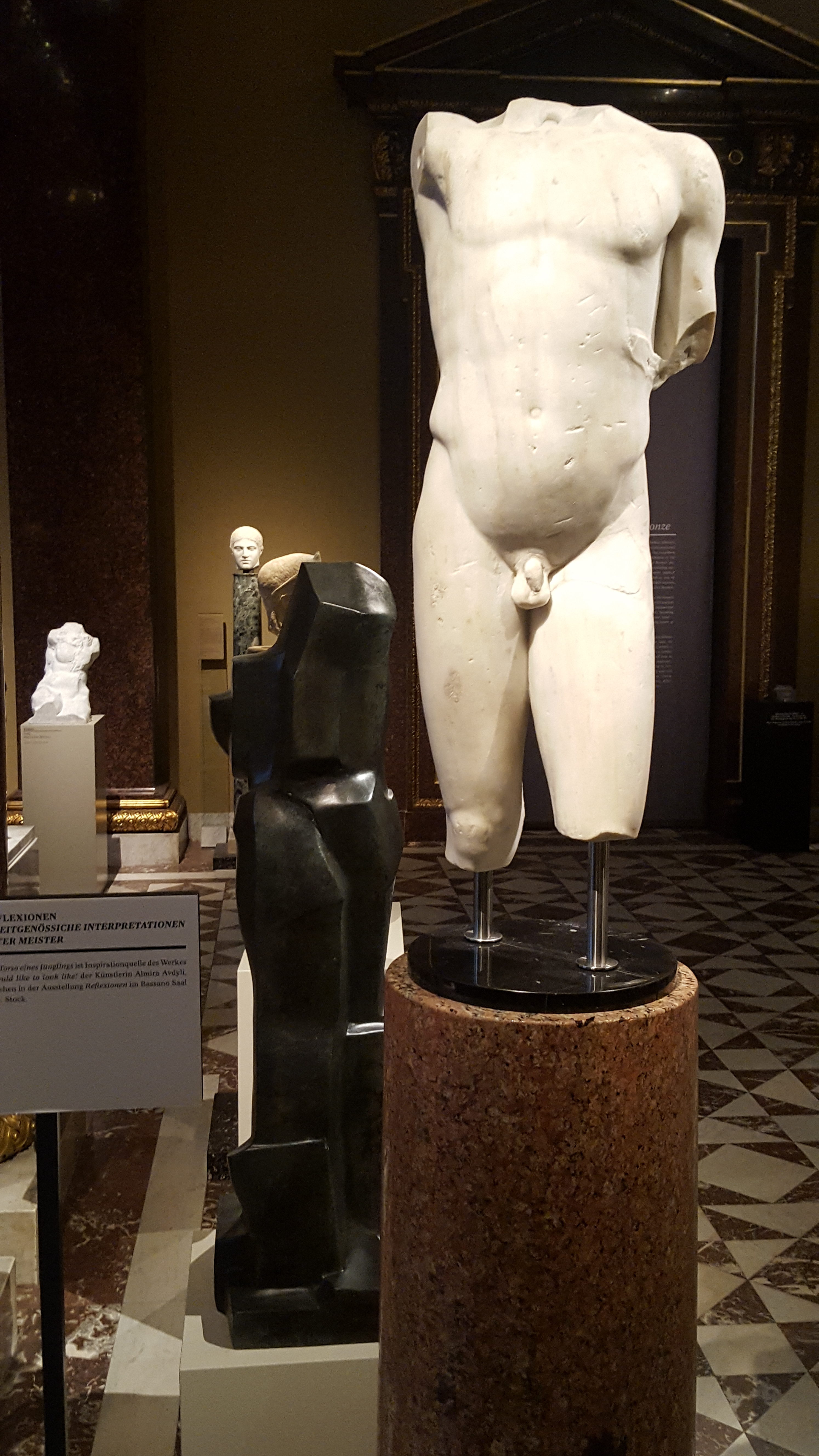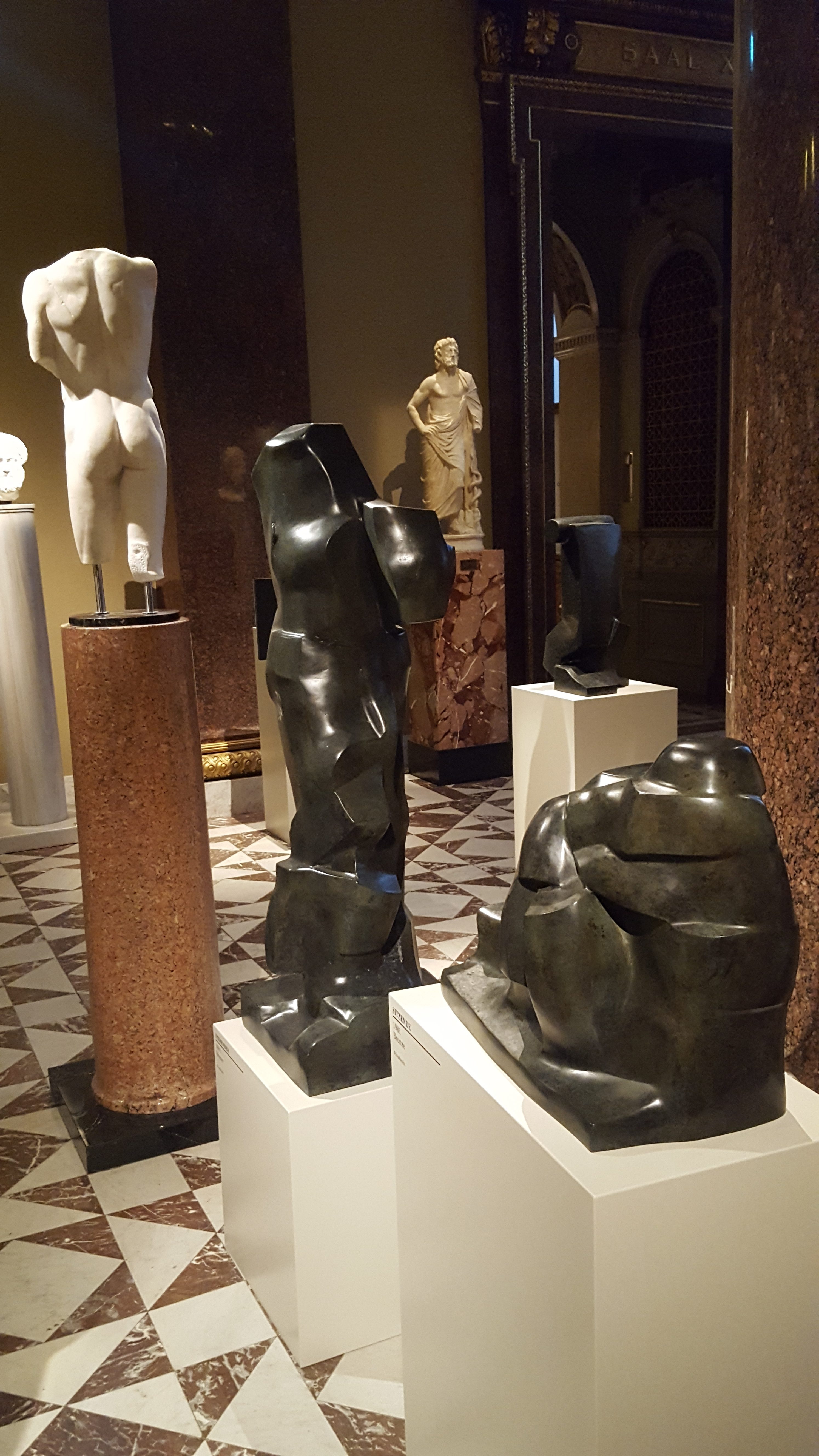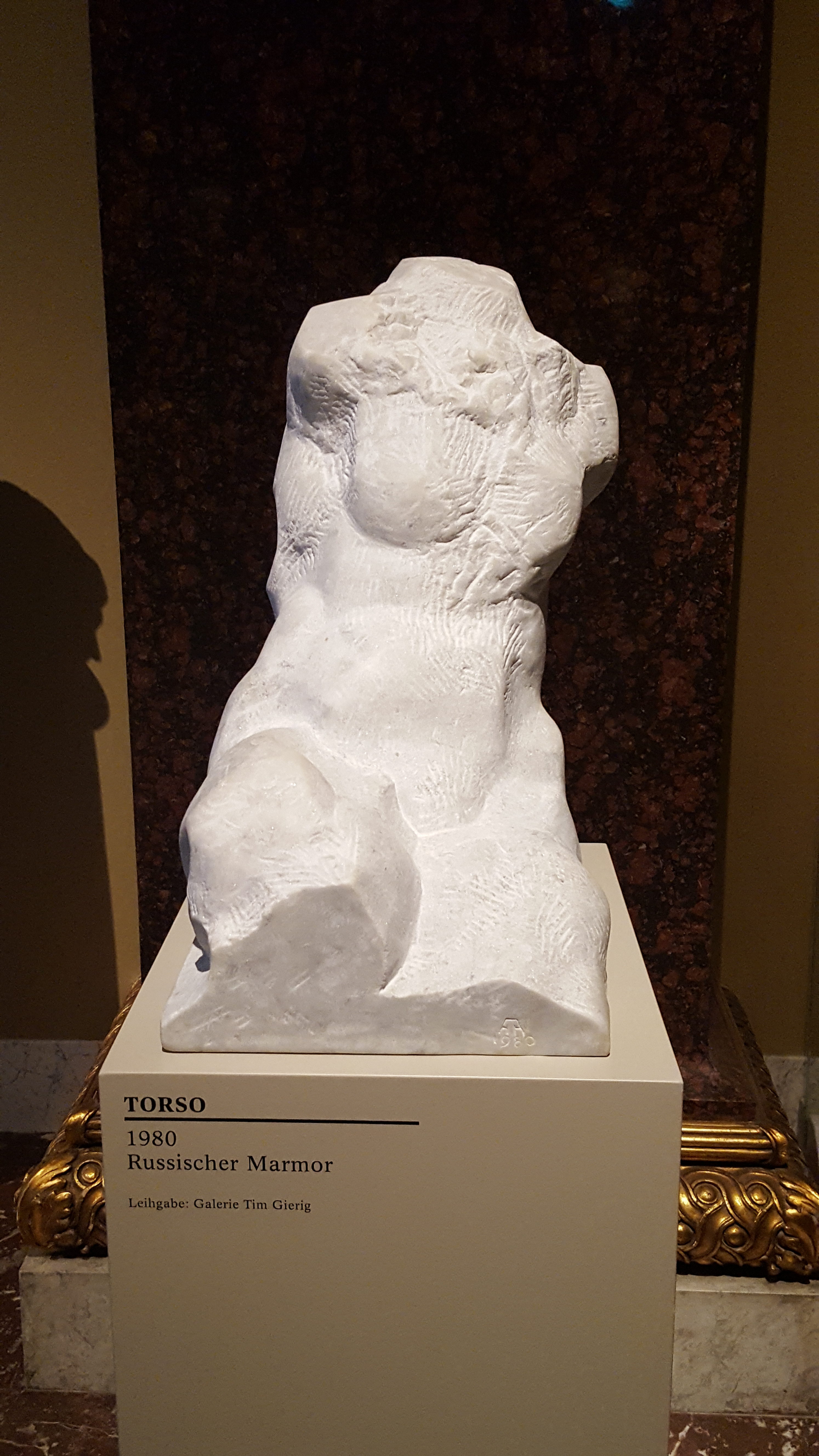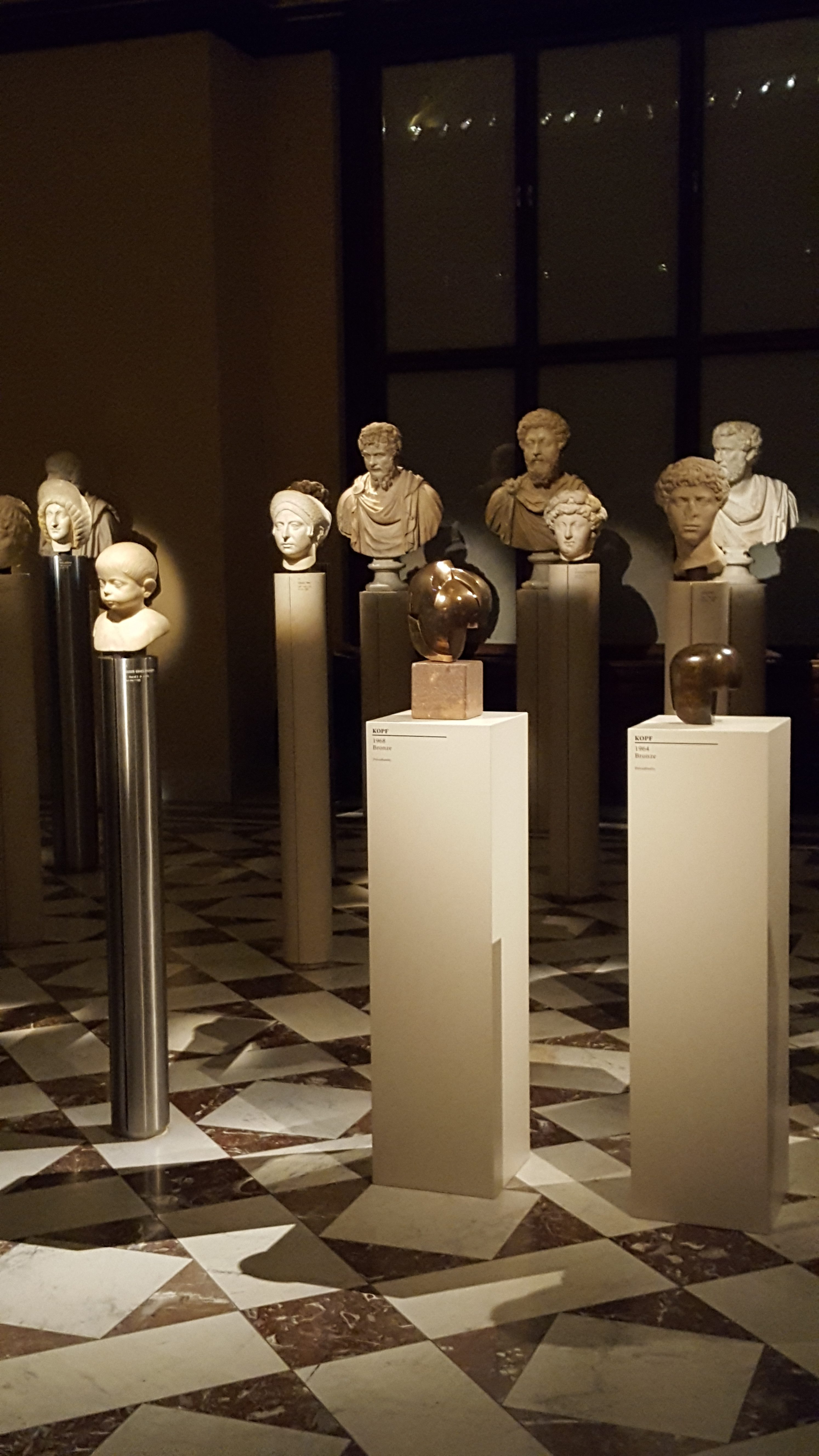Stein und Bronze in Vienna
Abigail Walker – one of the three student ambassadors on the Modern Classicisms project – recently ventured to Vienna to visit a show celebrating the work of Herbert Albrecht in the Kunsthistorisches Museum…
Every element of the Kunsthistorisches Museum in Vienna screams classicism. Recently, however, the museum also hosted an exhibition centred around the work of Herbert Albrecht (born 1927). The exhibition was staged in celebration of Albrecht’s ninetieth birthday, showcasing the artist’s contribution to the recent Austrian art scene. The exhibition, which collaborated with the Vorarlberg Museum in Bregenz, looks at the human body – a theme which Albrecht himself has explored in sculpture for over sixty years. Even at ninety, Albrecht continues to sculpt with the hard materials after which this exhibition was named – Stein und Bronze.
Stein und Bronze juxtaposed Albrecht’s work with Greek and Roman art to explore the formation of the ideal body in western art. But the artist’s comments in the accompanying exhibition catalogue hint that something more might be at stake. ‘The human image has become fragile, at least following the horrors of National Socialism’, Albrecht is quoted to have said. Following the abuses of classical traditions in Nazi Germany, Albrecht continues, it is no longer possible to idealise man, which is why ‘I reduce him’ – ‘in a way I turn him into a symbol’.
National Socialism’s use of the classical, according to Albrecht, has fractured the very idealism that classical art had been understood to embody. The human image can no longer – or perhaps should no longer – model itself on the ambitions for perfection that lie in the idealised figures of Greece and Rome. Albrecht’s works might seem outwardly to reject the classical. In doing so, however, they also embrace its history: at least in this display, the contemporary negotiates with the classical past at once to distance itself from it and to find inspiration in it.
The title of the exhibition, Stein und Bronze (‘Stone and Bronze’), also reminds us of the material and metaphorical resilience of the classical: ‘Stone demands attitude and poise,’ we are told, ‘and its hardness defies the fast pace of our time and thus the zeitgeist’.
The exhibition of Albrecht’s work explores more than just the image of the body in western art history. Stein und Bronze is about the very nature of classical appropriation: about both its appeal and its problems, and about a need to both celebrated and challenge that legacy at one and the same time.
The exhibition ran from 19 September 2017 to 14 January 2018 in the Kunsthistorisches Museum in Vienna.

